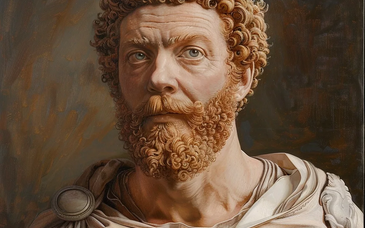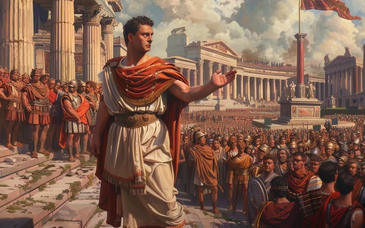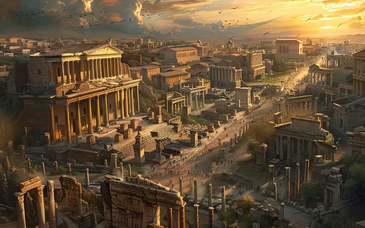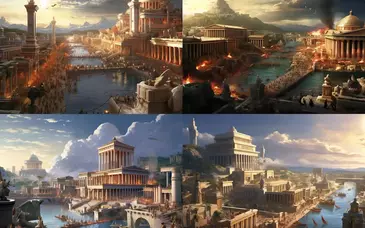The Senate had roughly 300 members. In the very early days of Roman history entry to the senate was by birth or rank. Later it was the consuls who nominated new members to the senate.
Plebeians gained entry in the course of the fourth century BC. It was their entry into the house which saw the assembly become a body of experienced magistrates, rather than merely being the privileged nobility.
Somewhere in the early to mid fourth century it became the censors who decided upon whom to allow to join the assembly. If usually it was consuls who joined the senators at the end of their year in office, Sulla introduced rules by which all quaestors entered the senate after their term in office. Had he created 300 new senators after the civil war his proscriptions it is estimated that the number of senators remained roughly around 500.
The senate itself didn't pass any laws of its own, but far more offered advice. However, it authority lay in its longevity. Any magistrate would only serve for one year. So despite enjoying more effective power than the senators he would be out of office after only twelve months, they wouldn't.
With the senate consisting entirely of former magistrates, one must consider that it was a body of vast experience and great competence.
Although the senate didn't appear to possess any defined powers, much of its power lay in customary acceptance of the senators advice on particular matters. And so foreign policy and major financial issues effectively lay firmly in the hands of the senate.
But so too did it advise on legislation and religious questions.
In effect, the senate formed, once plebeians had entered it, represented a aristocracy of political merit. Although, it must be said, that most were sons of former senators, continuing a long line of professional politicians in their family. And so there were few 'new men' to be found in the assembly.
The comitia curiata under the Roman kings acted as the people's assembly. It was up of representatives of the three old tribes of the city of Rome (three old tribes: ramnes, tities, luceres). It is apparently based on these three old tribes that ten divisions of each tribe mere made to form a curia, which would then be represented in the comitia curiata. This although King Servius Tullius defined the four new urban tribes of Rome (four new tribes:sucusana, esquilina, collina, palatina) which meant that the tribes no longer were matters of birth, but merely where in the city you held residence. Despite such changes the division of Rome into thirty curiae remained.
As an assembly the comitia curiata didn't really possess any real political powers. Far more its role was to 'confirm' magistrates in their position, once they had already been confirmed by the senate. In essence they therefore held no real political power, but acted as a discussion forum from which the spokesmen of the ordinary people could make their voices heard. The comitia curiata though also could act as a court of appeal for death sentences, if the quaestors deemed it suitable to hand a case to them for review.
The minimum age for the spokesman for a curia was fifty years and he was elected for life.
The comitia centuriata had already under the kings been the council representing the military units (the 'centuries'). The comitia centuriata elected the higher magistrates (consuls, praetors, censors-although it was the senate which nominated the candidates), officially declared war and peace (although the actual decisions for this lay with the consuls). Also it was the highest court of appeal for executions or exile.
When considering the comitia centuriata one needs to keep in mind that its great influence was reflecting the fact that it was made up of the soldiery, which in republican times was almost entirely made up of the landowning classes.
Its influence decreased in the later republic, being eclipsed by the comitia tributa and the concilium plebis.
The comitia tributa, the tribal assembly, was made up of spokesmen for the 'new' tribes, as initially defined by king Servius Tullius. If the king had originally created 20 tribes, then this was expanded to 35, of which four remained the tribes of the city of Rome (four 'new' tribes:sucusana, esquilina, collina, palatina).
It elected the lower magistrates (curule aediles, quaestors) and other officials. In the later republic became the chief law making body, together with the concilium plebis.
The concilium plebis, was the plebeian assembly. It could only be summoned by the Tribunes of the People (tribuni plebis). It was made up in the same was as the comitia tributa, but with the exception that the upper classes were excluded, hence only allowing admission to plebeians.
If at first the assembly could only pass laws (plebiscita) which would affect the plebeians, then from 287 BC onwards its decrees became effective for all Romans, irrespective of class. The assembly also elected the tribunes and plebeian aediles.
In the later republic became the chief law making body, together with the comitia tributa.





